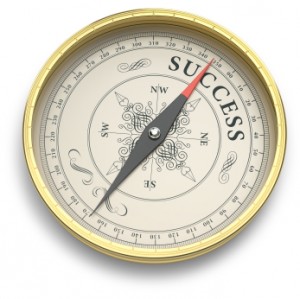Let's begin by analysing what social media really means. Safko (2010) has stated that "social media is the media we use to be social" (p.3). Based on his analysis, the word "social" refers to the institutional needs that humans have in order to connect with each other. Also, the word "media" refers to the technologies we use in order to connect with other people. Hence, social media is all about how we can use these technologies effectively to connect with people, create relationships and build trust.
So how is social media and public relations related to each other? Well, public relations professionals were some of the first people who believed in the power of social media. New communication channels have changed the way PR specialists function. For instance, the first press release was created in 1906 by Ivy Lee. It wasn't till '90s that online newswire services like PRNewswire's MultiVu multimedia release (MMR) was launched decreasing the use of fax machines and e-mails for the distribution of press releases. Afterwards, in 2006, social media release was introduced by Todd Defren.
Social media can include, but is not limited to, e-mail, online groups, blogs, Internet social networks, instant messaging and cell phones. These new technologies provide public relations the chance to choose from a great variety of communication tools in order to create connections with others. These tools which are widely used allow for:
- Greater frequency of communicative exchanges or interaction among people
- Easy, non-expensive and immediate access to information
- Promotion of public awareness
- Brand's loyalty building
Blog: A type of website where the owner can write posts and make them available in reverse chronological order. According to a survey in 2007, 1.4 blogs were created every second of every day.
Chat: Exchange of text messages in real time. Many companies have chat agents in their websites as an alternative to telephone support systems.
E-mail: A method of composing, sending, storing and receiving messages through electronic communication systems.
Social bookmark: Record of web pages of your interest through online lists that can be shared with small groups of colleagues or in public; e.g. Delicious.
Micro-blog: A form of blogging with limited space (140-200 characters); e.g. Twitter.
Message boards: Discussion groups or web forums that refer to a community who discusses a specific topic; e.g. Google's Groups and Yahoo Groups.
Mobile Internet: Mini-blog applications and location-based services (e.g. Foursquare) through mobile phone which provide an alternative way of communication.
RSS: Collection of information and distribution to the users who have requested to follow any news from the sites of their choice.
Social media release: Electronic form of press release which is enhanced with RSS and provide photos, comments and video and voice content.
Social networking sites: Websites that allow people to exchange interactive information among a network of friends through personal profiles and comment discussion lists; e.g. Facebook, MySpace, Linkedin.
Video-sharing: Online video is an important channel of communication since you can create a video, edit it and share it to your publics; e.g. YouTube.
Podcast: Audio file embedded into a web page where listeners can comment on the content.
However, social media need to be monitored in a way even if it seems difficult. Based on Maria Ogneva, the Director of Social Media at Attensity, monitoring is the "process of continuous and immediate discovery of conversations" in order to learn and collaborate. Monitoring is something more than measurement. It usually works on a keyword basis. The specific monitoring systems try to find specific words through social networks. Even if it cannot be so accurate sometimes, it is good for PR practitioners to monitor the social media influence of their brands through specific tools such as:
Monitoring social media can be effective since it allows as much as possible to track what is being said about your company and your brand. Having a strategy and knowing from the beginning how to monitor the social media that you use, it can make you undesrtand and analyse better the information about your company, your clients and correct any policies.
However, social media need to be monitored in a way even if it seems difficult. Based on Maria Ogneva, the Director of Social Media at Attensity, monitoring is the "process of continuous and immediate discovery of conversations" in order to learn and collaborate. Monitoring is something more than measurement. It usually works on a keyword basis. The specific monitoring systems try to find specific words through social networks. Even if it cannot be so accurate sometimes, it is good for PR practitioners to monitor the social media influence of their brands through specific tools such as:
Here is a video that analyses some of the tools for monitoring social media:
Sources and photos are taken from:
Safko, L. (2010) The Social Media Bible: Tactics, Tools, and Strategies for Business Success. 2nd edn. Hoboken, NJ: John Wiley & Sons.
Phillips, D. and Young, P. (2009) Online Public Relations: A Practical Guide to Developing an Online Strategy in the World of Social Media. 2nd ed. London: Kogan Page.
http://www/pr-squared.com/index.php/about
http://socialwants.com/5-step-free-social-media-monitoring-process/
http://www.zionglobalmarketing.com/social-media-marketing-service/
http://www.mopwaterpr.com/
http://search.twitter.com/advanced/
http://bit.ly/
http://www.facebook.com/help/?page=1030
http://mashable.com/2010/07/29/monitor-measure-brand-social-media/
http://www.webdigi.co.uk/blog/apps/fbgat-facebook-google-analytics-tracker/
http://www.bloggingjunction.com/leading-media-management-tool-social-media/
http://www.youtube.com/
http://www.linkedin.com/
http://www.myspace.com/
http://www.facebook.com/
http://www.skype.com/intl/en-gb/welcomeback/
https://foursquare.com/
http://groups.yahoo.com/
http://sfantis.com/?p=268
http://www.delicious.com/
http://groups.google.com/?pli=1
http://twitter.com/
http://searchenginewatch.com/3623806






